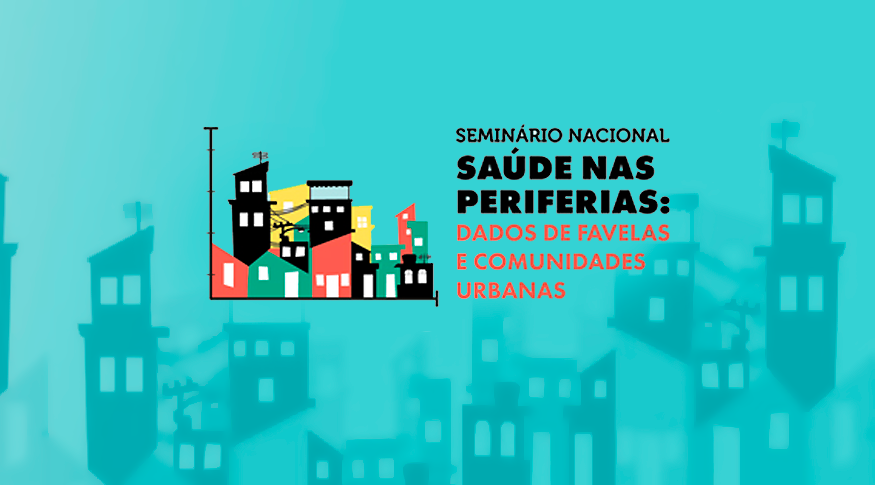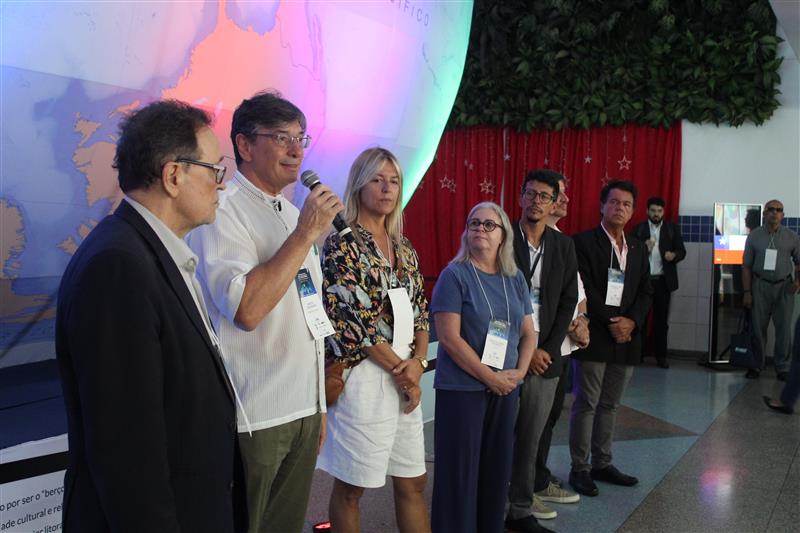System of Cultural Information and Indicators
From 2011 to 2022, cultural sector receives more companies, but reduces its participation in the economy
December 01, 2023 10h00 AM | Last Updated: December 05, 2023 03h37 AM
Highlights
- In 2021, the number of companies in the cultural sector reached 387.6 thousand, with an increase of 3.1% from 2011. Nevertheless, in this period, the proportion of companies engaged in cultural activities dropped from 7.3% to 6.7% of the companies in Brazil.
- Salaries paid by the cultural sector amounted to R$83.3 billion in 2021. That represented an average monthly salary of R$4,135.
- From 2011 to 2021, the activities of design and creative services recorded the biggest increase in terms of number of companies: 53.8 thousand organizations more.
- In 2021, the net revenue of companies in the cultural sector reached R$ 741 billion and value added hit R$ 288 billion.
- In 2021, 5.5 million persons were employed in the cultural sector (5.6% of the total employed persons in the country). There was a bigger proportion of persons with a higher education degree (30.6% versus 22.6% of the total), but also a higher level of informality (43.2% against 40.9%).

In one decade, the number of companies in the cultural sector increased by 3.1%, and reached 387.5 thousand in 2021. On the other hand, in the same period, the total number of organizations in the country increased by 12%. That explains the reduced participation of cultural activities in the company overall, which fell from 7.3% in 2011 to 6.7% in 2021. These figures come from the System of Cultural Information and Indicators (SIIC) 2011-2022, released today (Dec 01) by the IBGE. Besides data on the labor market and investments in the area, the study presents information about the access of the population to cultural facilities.
The salaries paid amounted to R$ 83.3 billion, which is equivalent to an average monthly salary of R$ 4,135. It is a figure 26.6% above the average of salaries surveyed by the Central Registry of Enterprises (Cempre), one of the sources of this study. “The higher pay results from the fact the cultural sector has more persons with a higher education degree and, in general, more qualified in relation to other sectors,” says Leonardo Athias, analyst of the survey.
The publication uses a classification by Unesco, which classifies cultural activities into central (with eight types) and transversal (equipment and supporting material). “The central domains are more related to what we identify as culture in a more specific way, whereas the side ones relate to support, such as manufacture and trade of equipment, telecommunications, which are also necessary for cultural enjoyment,” says the researcher.
In 2021, transversal activities employed 51.9% of the salaried persons. The central activities were the ones accounting for the increase of 3.1% in the number of enterprises, since 2011, concentrating 66.3% in 2021. The activity Design and creative services recorded the biggest increase in the period, with 53.8 thousand new enterprises. Other significant increases were registered by Audio-visual and interactive media (11.8 thousand units) e Education and Training (2.2 thousand). In other activities, the numb decreased, the main one being Books and press (-25.7 thousand).
The segment of Design and creative services was also the main one in terms of salaried persons, with an increase of 40.8 thousand in the decade. But the biggest concentration of salaried persons of Central Activities was in the sector of Audio-visual and interactive media (32.2%), which also paid the highest salaries (R$4,751). The lowest salaries, on the contrary, were paid by sports and recreation (R$ 1,808).
Women were the minority among salaried persons in the cultural sector and earned lower salaries
In 2021, women represented 43.7% of the salaried persons in the cultural sector and were mostly present in the activities of Education and Training (68,2%), Visual arts and crafts (64.5%) and Books and press (53.1%). Men were the majority in Audio-visual and interactive (62.4%), Equipment and supporting material (61.8%) and Artistic presentations and celebrations (56.7%).
In the cultural sector, women also earned lower salaries than men. They made, on average, R$ 4,730.37 per month, whereas they earned R$ 3,354.00. Women’s salaries were equivalent or a little higher than those of men in only two activities: Cultural and natural heritage and Artistic performances and celebrations. Also in 2021, about 41.1% of the salaried persons in Cultural and natural heritage had a higher education degree, whereas in Visual arts and crafts, the proportion hit 9.4%.
In the same year, only 38.9% of the enterprises in the cultural sector survived their first year of existence. Among the companies surveyed by Cempre, the rate was of 41.1%. Among the activities in the cultural sector, the highest survival rate was that of Education and Training (48.4%), whereas Sports and recreation recorded the lowest one (28.5%).
Cultural sector reduces its participation in the economy from 2011 to 2021
The study also presents data of the Annual Survey of Industry - Enterprise (PIA), the Annual Survey of Trade (PAC) and the Annual Survey of Services (PAS) to explain the importance of the cultural sector in the economy. These structural surveys encompass fewer activities and types of companies than Cempre. Within this context, in 2021, the estimated number of companies in the cultural sector were 246.8 thousand and employed 1.8 million persons.
The companies in the sector generated R$ 740.8 billion in net operating revenue, or 5.8% of the total generated by all the activities. There was retreat of 2.1 p.p in this participation between 2011 and 2021. The participation of the cultural of value added in the cultural sector also dropped in the decade: in 2021, R$ 287.9 billion were generated, or 8.0% of the total. The decrease in participation in this period amounted to 2.8 p.p.
According to the study, this decrease in in participation of culture in the total value added, from 10.8% to 8.0% in the decade, was related to the Covid-19 pandemic. From 2011 to 2019, the participation had decreased by 1.3 p.p. In the following years, between 2019 and 2021, there was accelerated loss, with a drop of 1.5 p.p. in the period.
Transversal activities increased their participation in value added of the cultural sector from 64.1% to 67.7% between 2011 and 2021. The decrease in importance of central activities in the period was due to the reduced participation of Books and press (-3.1 p.p.) and Audio-visual and interactive media (-1.8 p.p.), a domain that encompasses cable and broadcast TV, with the biggest drops. The biggest increase came from Design and creative services (1.0 p.p.), with a highlight to advertising agencies and activities.
Despite the highest share of the value added of culture (13.6%), Audio-visual and interactive media dropped in terms of relevance (by -0.8 p.p) between 2019 and 2021, during the pandemic. Before this period, the activities Wired, wireless and satellite telecommunications stood out (with -5.4 p.p. of the value added).
“From 2019 to 2021, some activities related to advertising and Internet increased, whereas telecommunications, broadcast TV and subscription TV fell in importance regarding value added. That means a change in habits, with the rise of the streaming and other types of accesses against what used to exist before,” Mr. Athias explains.
 The activities of Development and licensing of software (4.6 p.p.) and Wholesale trade of information and communication technology products and equipment (3.2p.p.) expthe value added of culture, between 2011 and 2021. The highlights, regarding loss of relevance in this period were Editing and editing integrated with printing (from 5.1% of cultural value added in 2011 to 2.2% in 2021), Subscription television operators (-2.6 p.p.) and Broadcast television activities (1.8 p.p). the main increases, on the other hand, came from content providers and other information services on the Internet (2.2 p.p.) and Other telecommunication activities (1.5 p.p.).
The activities of Development and licensing of software (4.6 p.p.) and Wholesale trade of information and communication technology products and equipment (3.2p.p.) expthe value added of culture, between 2011 and 2021. The highlights, regarding loss of relevance in this period were Editing and editing integrated with printing (from 5.1% of cultural value added in 2011 to 2.2% in 2021), Subscription television operators (-2.6 p.p.) and Broadcast television activities (1.8 p.p). the main increases, on the other hand, came from content providers and other information services on the Internet (2.2 p.p.) and Other telecommunication activities (1.5 p.p.).
Number of persons employed in the cultural sector increases in 2022
The cultural sector employed 5.4 million persons in 2022, according to the Continuous PNAD. The figure represents 5.6% of the employed population in the country. However, the pandemic had a severe impact on the cultural sector. There was a decrease in the percentage of jobs, reaching 4.9 million in 2020 and 5.0 million in 2021. Also, 2021 was the year when the cultural sector reached its lowest share in the time series of total employment in the labor market (5.5%). In 2022, with an increase of approximately 9.9% in the number of employed persons, it returned to a level closer to that of 2019. In both 2019 and 2022, there were about 5.5 million people working in the sector.
Since the beginning of the time series of SIIC, in 2014, the workers in the cultural sector were more educated than the employed ones. In 2022, for the total number of workers in the country, 22,6% had a higher-education degree, whereas in the cultural sector, they were 30.9%. The participation of women in the cultural sector increased from 46.4% in 2014 to 49.5% in 2020, but decreased in the following two years. In 2022, they represented 47.2% of the total number of workers.
Proportion of black and brown workers in the cultural sector is below average
The proportion of black and brown among the workers in the cultural sector (43.9%) was lower than their proportion of the employed population in the country (54.2%) in 2022. Between 2019 and 2020, there was a decrease in the share of black and brown persons both in the cultural sector and in the other ones.
Black and brown workers were the most affected ones, with greatest losses in informal than in formal jobs. Although their share in the sector had recovered slightly in 2022, the proportion is still lower than in 2019 (45.3%).
In 2022, self-employed workers were the main category of the population employed in the cultural sector and represented 42.1% of the total employed persons, followed by workers in the private sector with a formal contract (35.9%) and without a formal contract (14.4%). In the same year, the proportion of informal workers in the cultural sector was 43.2%, while the percentage of the employed population in the country was 40.9%.
In 2022, the average usual earnings of workers in the cultural sector was R$ 2,815, with an increase of 9.8% compared to 2014 (considering inflation during the period). This value is above the average earnings of the employed population in the country in the same year (R$ 2,582), which has also increased by 9.8% since the beginning of the series. In the cultural sector, men (R$ 3.087) earned an average monthly salary above that of women (R$ 2.510 or 23% of men’s salary).
About the study
SIIC (2011-2022) presents information on employment and number of companies engaged in cultural activities, as well as on value added generated by such activities. Also relevant are the cultural Price Indexes (IPCult) and the access of families to cultural products and services. In this edition, there are data on leisure tourism and on municipal facilities and policies in culture, with information detailed by Major Regions and, for some indicators, by Federation Units and Municipalities.




















